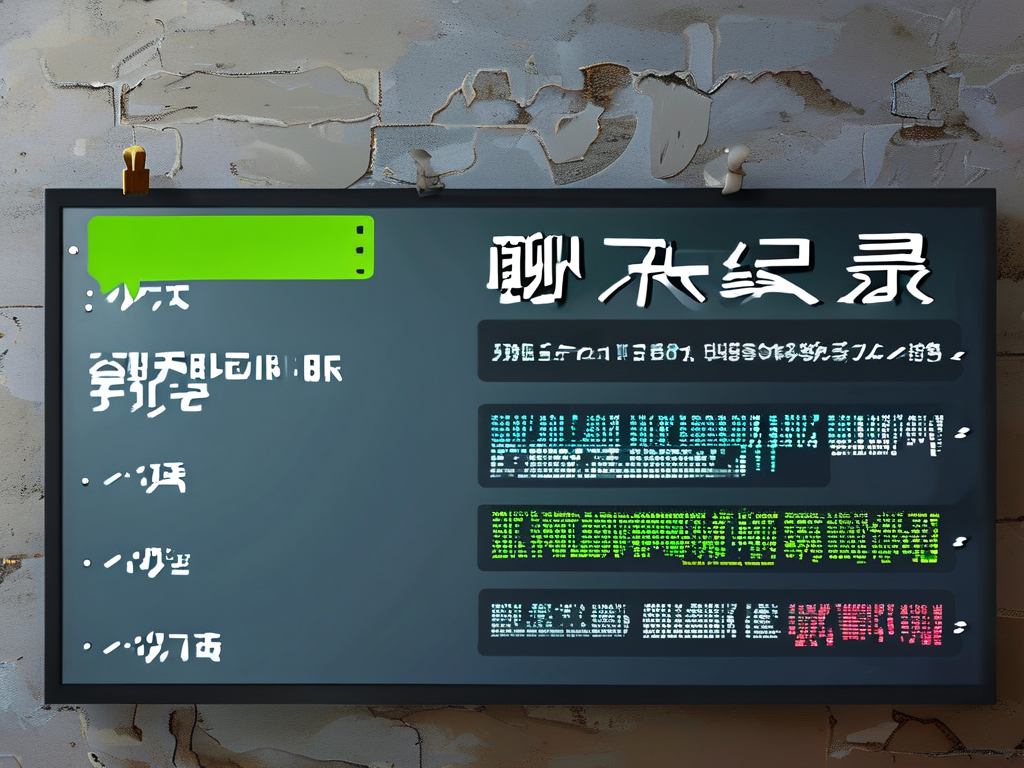As digital communication becomes ubiquitous, understanding the storage footprint of chat histories has grown critical for both individual users and enterprise systems. This article explores practical methods to calculate memory consumption in messaging platforms while offering actionable optimization strategies.

The Anatomy of Chat Data
Every chat message contains multiple components: plain text, embedded media (images/videos/audio), timestamps, user metadata, and system flags (e.g., read receipts). A single text-only message typically occupies 0.1–0.5 KB, but this scales exponentially with attachments. For example:
- A 12MP JPEG image ≈ 3–5 MB
- 1-minute 720p video ≈ 60–100 MB
- Voice memo (3 minutes) ≈ 2–4 MB
Developers often overlook metadata overhead. Message headers containing UUIDs, encryption tags, and synchronization markers can add 15–30% extra storage per conversation thread.
Calculation Framework
Use this formula to estimate storage needs:
Total Size = (Avg_Text_Size × Message_Count) +
(Media_Files × Avg_Media_Size) +
(Metadata_Overhead × Thread_Count) For a group chat with 10,000 messages (20% containing 500KB images):
Text: 10,000 × 0.3 KB = 3,000 KB
Media: 2,000 × 500 KB = 1,000,000 KB
Metadata: 10 × 150 KB = 1,500 KB
Total ≈ 1,004.5 MB Platform-Specific Variations
Messaging apps handle storage differently:
- iOS uses SQLite with compression (≈15% space savings)
- Android employs RealmDB, prioritizing write speed over compression
- Web apps like Slack retain Base64-encoded previews, inflating media size by 33%
A Telegram secret chat with end-to-end encryption showed 22% larger storage than standard chats due to cryptographic nonces and HMAC tags in testing.
Optimization Techniques
-
Media Compression
Implement on-the-fly resizing using libraries like libvpx (video) or MozJPEG. A 4K image can be reduced to 1080p with minimal quality loss, saving 75% space. -
Ephemeral Messaging
Automatically purge messages older than X days using cron jobs or cloud functions:def delete_old_messages(retention_days=30): threshold = datetime.now() - timedelta(days=retention_days) ChatMessage.objects.filter(timestamp__lt=threshold).delete()
-
Deduplication
Hash-based detection prevents storing identical files multiple times. When User A sends a 10MB PDF already in storage, the system creates a pointer instead of duplicating the file. -
Tiered Storage Architecture
Hot data (recent chats) stays on SSDs for quick access, while cold data migrates to cheaper HDDs or object storage like S3 Glacier after 6 months.
Case Study: Enterprise Slack Migration
A fintech company reduced their chat storage costs by 41% using three tactics:
- Enabling GIF-to-WebP conversion (saved 8.2 TB annually)
- Configuring message auto-deletion after 18 months
- Migrating archived channels to AWS Deep Archive
Future Trends
Emergent technologies like sparse tensors for ML-powered chat summarization could reduce storage needs by 90% while preserving context. Meanwhile, the EU’s Data Minimization Directive is pushing apps to adopt stricter retention policies.
By combining precise calculation methods with intelligent compression and retention strategies, organizations can significantly optimize chat data storage without compromising usability. Regular audits using tools like ncdu or Windirstat help maintain efficiency as communication patterns evolve.









